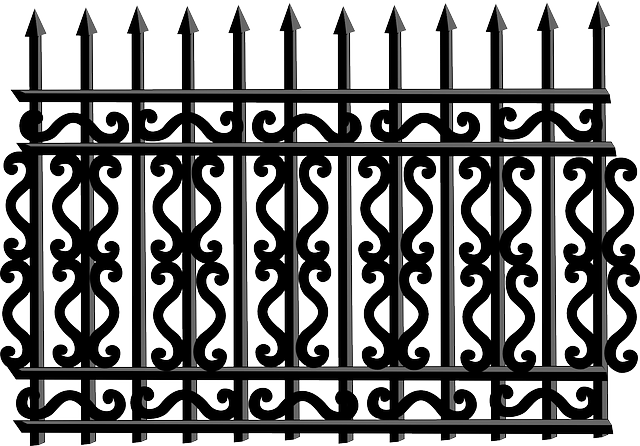Fences serve as both functional and aesthetic elements in any outdoor space, and proper care can extend their lifespan significantly. This article guides you through the process of enhancing your wooden fence with professional-grade staining and sealing. From understanding the benefits and exploring various stain types to mastering application techniques and choosing the right sealers, these steps ensure your fence not only looks its best but also stands up against environmental factors for years to come.
- Understanding Fence Staining: Benefits and Types
- Preparing Your Wooden Fence for Staining
- Choosing the Right Stain: Color and Finish
- Application Techniques for Professional Results
- Sealing for Longevity: Protection Against Elements
Understanding Fence Staining: Benefits and Types
Fence staining is a popular way to enhance the appearance and protect wooden fences. It involves applying a colored sealant to the fence’s surface, which can transform an ordinary fence into a stunning feature for your outdoor space. The process offers several advantages; not only does it improve the aesthetic appeal, but it also safeguards the wood from the elements, increasing its longevity. By blocking out harmful UV rays and preventing water absorption, stained fences are less likely to rot or warp over time.
There are various types of fence staining products available, each with unique characteristics. Water-based stains are popular for their ease of application and low odor, while oil-based options provide deeper colors and longer durability. Some stains also include UV protection, ensuring the color remains vibrant for an extended period. Whether you prefer a subtle enhancement or a bold new look, understanding these types and their benefits will help you make an informed decision for your fencing project.
Preparing Your Wooden Fence for Staining
Before applying any stain or sealer, it’s crucial to prepare your wooden fence properly. Start by cleaning the fence thoroughly to remove any dirt, dust, or debris that might hinder the staining process. Use a pressure washer or a brush and mild detergent for this step. Ensure the wood is dry completely before proceeding.
Inspect the fence for any damaged or rotten sections. Repair these areas using suitable wood putty or replacement boards to ensure even application of stain and long-lasting protection. Sanding the fence slightly can also help with adhesion, but be careful not to sand too aggressively, as it might damage the wood fibers.
Choosing the Right Stain: Color and Finish
When choosing a fence stain, the first consideration is color. Different shades can dramatically alter the appearance of your wooden fence, from rich, deep tones to subtle, natural hues. It’s essential to select a color that complements your home’s exterior and the overall landscape design. Beyond color, finish plays a crucial role in determining the stain’s durability and how it interacts with the wood. Water-based stains offer a low-odor, eco-friendly option with quick drying times, while oil-based stains provide deeper penetration and richer colors but may take longer to dry.
For outdoor durability, consider stains with UV protection to safeguard against fading and discoloration from sunlight exposure. Some stains also include mildew resistance, which can help maintain the fence’s aesthetic appeal over time. Testing a small area first is recommended to ensure the chosen color and finish meets your expectations and aligns with the fence’s natural grain.
Application Techniques for Professional Results
When it comes to achieving professional results with fence staining and sealing, the application technique plays a pivotal role. The process begins by thoroughly cleaning the wooden fence to remove any dirt, debris, or existing stains. This step is crucial as it ensures the new stain adheres properly. After cleaning, gently sand the surface to create a rough texture, allowing the stain to better penetrate the wood fibres.
Next, choose the right tools for application—a high-quality brush, roller, or sprayer. For smaller fences or intricate designs, a brush offers precise control. A roller is ideal for larger surfaces as it provides an even coat. Spraying offers quick coverage but requires more skill to avoid overspray. Apply the stain in thin, even layers, allowing each coat to dry before adding another. This technique not only ensures optimal colour saturation but also prolongs the life of your fence’s protective seal.
Sealing for Longevity: Protection Against Elements
Sealing plays a pivotal role in extending the lifespan of your wooden fence, safeguarding it against the relentless elements that can cause deterioration over time. By applying a protective layer, you create a barrier that prevents moisture from seeping into the wood’s fibers, which is a primary cause of rot and decay. This is especially crucial in regions with varying weather conditions, where fences might experience both extreme heat and freezing cold, leading to expansion and contraction of the wood.
A good seal not only shields against water but also repels UV rays from the sun, another significant contributor to wood fading and cracking. By safeguarding against these environmental factors, you ensure that your fence maintains its structural integrity and aesthetic appeal for years to come. Regular sealing is a simple yet effective way to keep your wooden fence in top condition without having to frequently replace or repair it.
